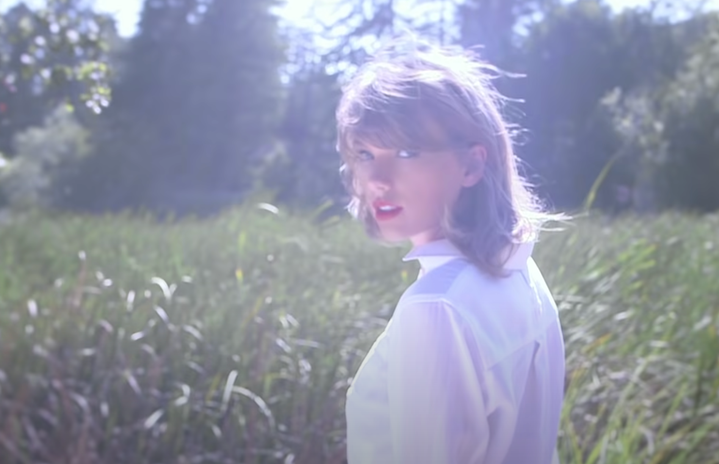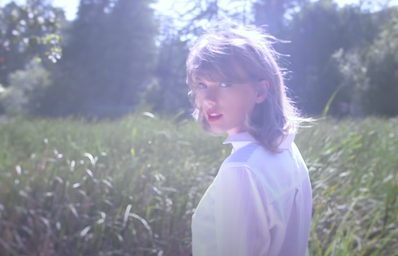Known for her lyrical masterpieces, Taylor Swift’s song “Coney Island (feat. The National)” demonstrates a new level of lyrical maturity during her transition from pop to alternative music.
Swift took both fans and the music industry by surprise when she released her ninth studio album Evermore, on December 11, 2020. “Coney Island,” the ninth track on the album, describes a fictitious failing relationship, with Swift’s vocals representing one partner and Matt Berninger from The National representing the other. On previous albums, Swift’s songs recount experiences from her own life, but both Evermore and Folklore tell stories of characters Swift created, showing growth in her songwriting and storytelling.
The song uses the actual theme park Coney Island to describe the crumbling relationship. Bright lights and amusement park rides made Coney Island the premier theme park for New Yorkers, before the Great Depression and World War II led to its demise. From bustling to abandoned, the attraction failed to provide the entertainment it once did for New York summers. After the first verse, Swift sings “I’m sitting on a bench in Coney Island, wondering where did my baby go?” Light percussion and a bass in the background makes Swift’s voice the sole focus of this part of the song. Just like an abandoned amusement park, the relationship Swift and Beringer represent feels dark, cold and empty; both partners experience isolation and loneliness.
Swift’s songs create tension through contrast by placing more dramatic bridges next to calmer verses. The lyrics of the bridge in “Coney Island” express feelings of regret and the instrumentals heighten that sentiment. In the bridge, Taylor alludes to three of her past relationships through lyrics that parallel lines in other songs. “Were you standing in the hallway / With a big cake, happy birthday” references “The Moment I Knew,” a song off Red (Deluxe Edition) about how Jake Gylenhall stood Swift up on her 21st birthday.
The next lines “And when I got into the accident / The sight that flashed before me was your face,” hints at Harry Styles and the song “Out of the Woods,” the fourth track on 1989. Back in 2012, Swift and Styles went on a snowmobiling trip together. The bridge in “Out of the Woods,” starts with “Remember when you hit the brakes too soon / Twenty stitches in the hospital room,” and according to an article from Rolling Stone, “She says it was inspired by a snowmobile ride with an ex who lost control and wrecked it so badly that she saw her life flash before her eyes.”
The final lines of the bridge “But when I walked up to the podium / I think that I forgot to say your name” don’t reference a past Swift song, but solely her relationship with Calvin Harris. During Swift’s 2016 acceptance speech at the Grammys she never thanked Harris, allegedly a point of controversy. Feeding these rumours, the lyrics give dedicated fans or “Swifties” another aspect of Swift’s life to theorize about.
Before Folklore and Evermore, Swift treated her albums like diaries, capturing the details of the romantic aspects of her life. Swift’s ability to make her song lyrics read like a story influences her fans to decode her discography. With Folklore, Swift tells tales of characters she created for the album, but on Evermore with “Coney Island,” she creates a fictitious narrative and includes references to her old lovers. We have yet to see Swift do anything like this yet, signifying improvement in her songwriting while she experiments with creating alternative music. In the bridge, Swift and Beringer alternate singing every couple of lines which gives the illusion of a conversation about where their relationship went wrong. The increased volume of the instrumentals along with the inclusion of Swift’s vocals in the background creates a dramatic effect, like most Taylor Swift bridges do.
The final verse of “Coney Island” dramatizes an already melancholic song. The increase of Swift’s background vocals fills the listener with anticipation because it feels like they build up towards something that can only be reached by arriving at the end of the track. She sounds desperate and almost whimsical and we wonder what will become of the relationship Swift and Beringer’s vocals represent. The harmonization of their voices shows that while they played different parts in the relationship’s demise, they know the “sun has gone down” and the relationship is ending. The repetition of the lyric “Sorry for not making you my centerfold” may be the most heart wrenching of all: what an unreasonable standard and yet both Swift and Berninger exude guilt and regret.
Critics fail to recognize the brilliance of “Coney Island.” The Washington Post labels it an “imbalanced duet” with “bad lyrics” and Billboard ranks it last out of all the tracks on Evermore. Fans praise “Ivy” and “Champagne Problems” yet often overlook Swift’s collaboration with The National. While lines like “Cause we were like the mall before the internet / It was the one place to be” may not be Swift’s most profound lyrics, the blending of past star-crossed lovers and fiction to write a track requires talent. I can’t wait to see what stories Swift tells next, forevermore.


